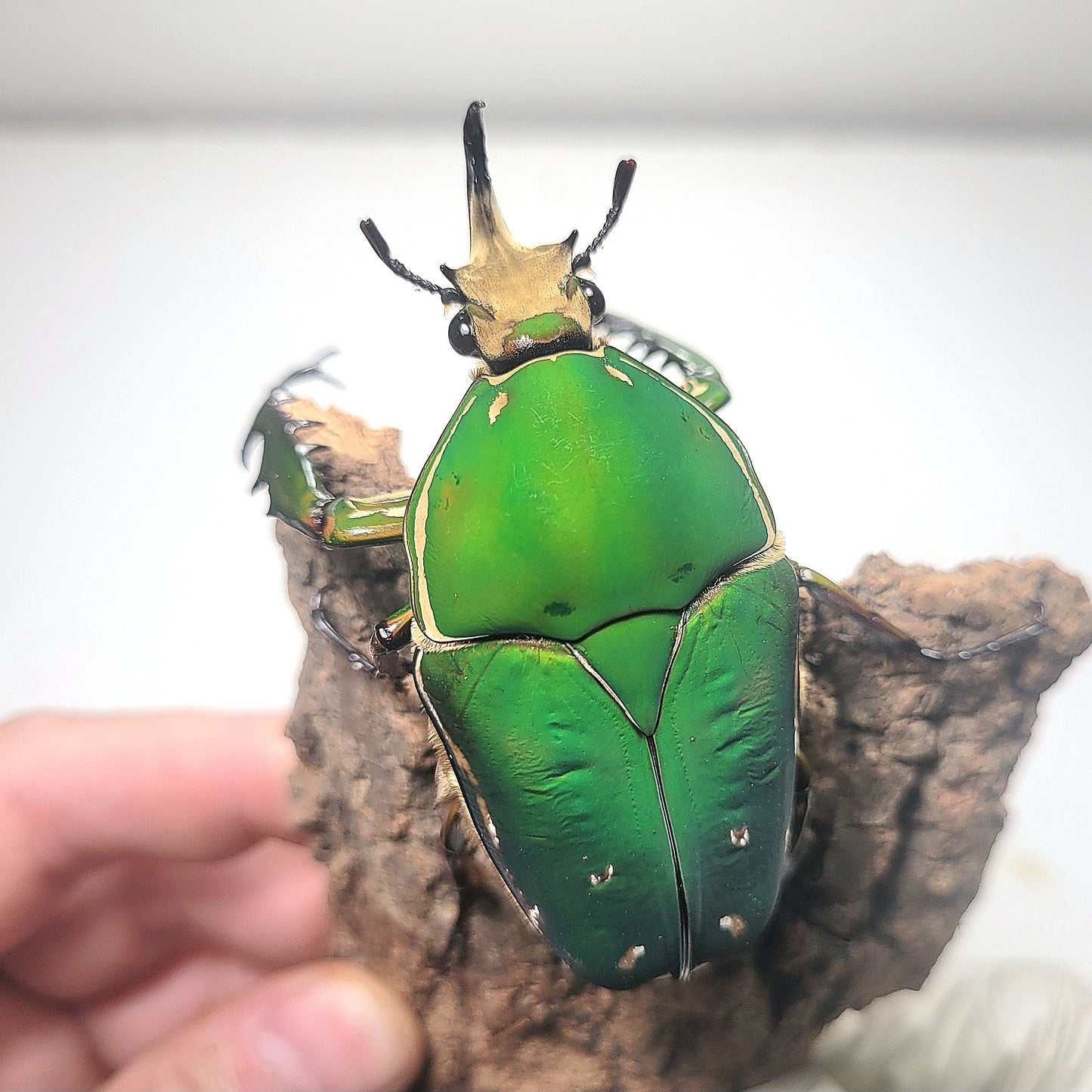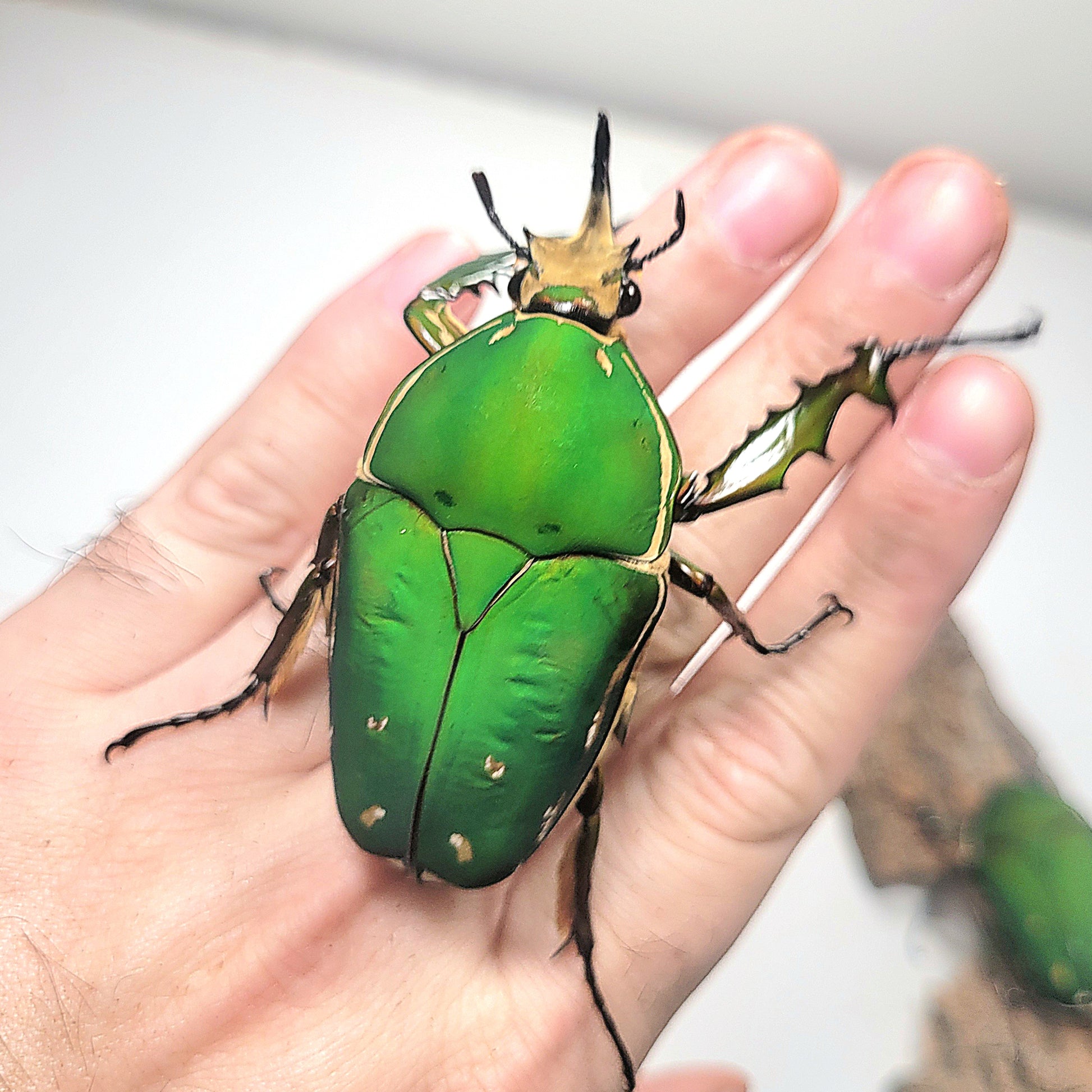James' Beetle Farm
Mecynorrhina torquata immaculicollis
Mecynorrhina torquata immaculicollis
Couldn't load pickup availability
Mecynorhina torquata immaculicollis, commonly known as the Giant Flower Beetle, is a
striking and elegant species within the Cetoniidae family. This beetle is admired for its unique and refined appearance, making it a notable choice among collectors and enthusiasts.
The Mecynorhina torquata immaculicollis is distinguished by its distinctive appearance. Adults typically measure between 40 to 85 millimeters in length. They have a sleek, metallic green exoskeleton that often features subtle patterns or a smooth, unblemished surface, giving them a refined and "immaculate" look. Males are particularly recognized by their prominent, often elaborate horns, which are used in mating displays and combat with other males.
Native to the tropical rainforests of Africa, Mecynorhina torquata immaculicollis thrives in warm, humid environments. In the wild, these beetles are commonly found in areas with abundant vegetation and decaying organic matter, which they use for feeding and laying eggs. They are diurnal, meaning they are active during the day, which makes them easier to observe compared to nocturnal species. Their active daytime behavior, combined with their striking appearance, makes them fascinating to watch.
The diet of the Giant Flower Beetle is relatively straightforward. Adults primarily feed on
soft, sweet fruits such as bananas, mangoes, and apples. They can also be provided with beetle jelly, which supplies essential nutrients and hydration. The larvae require a substrate rich in decaying organic material, such as leaf litter and rotting wood. This substrate supports their development through several stages before they pupate and emerge as adults.
Breeding Mecynorhina torquata immaculicollis in captivity involves providing a suitable
environment for egg-laying and larval development. Females lay eggs in a deep substrate rich in decaying plant material. The larvae are robust and go through several developmental stages before pupating in a chamber made from the substrate. After a few months, they emerge as adults. Successful breeding requires careful attention to temperature and humidity to support the larvae's growth and development.
The Giant Flower Beetle generally lives for several months as an adult with proper care.
They need a warm, humid environment that closely resembles their natural tropical habitat.
Regular misting of the enclosure and maintaining a stable temperature are important for their health and longevity. Although they are hardy, they perform best with consistent care and attention to their specific environmental needs.
Mecynorhina torquata immaculicollis is usually calm and can be handled with care. Their
elegant appearance and active daytime behavior make them engaging to observe. Due to their size and strength, they should be handled gently to avoid causing stress or injury.
Mecynorhina torquata immaculicollis, or the Giant Flower Beetle, is a visually captivating
and relatively easy-to-care-for species. Its refined appearance, impressive size, and
straightforward care requirements make it a rewarding addition to any beetle collection. With appropriate care and attention to their environmental needs, these remarkable beetles can thrive and provide ongoing fascination for their keepers.
Share




















